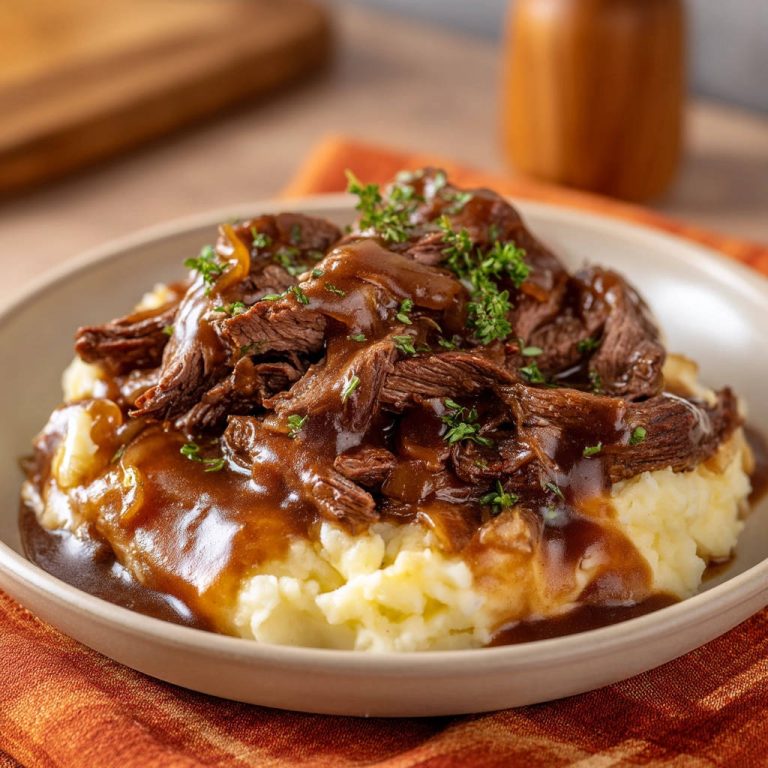There’s something incredibly comforting about a warm bowl of tomato soup. It’s a classic, a staple, the perfect partner to a crispy grilled cheese sandwich on a chilly day. But let’s be honest, have you ever made a batch of homemade tomato soup only for it to taste… well, kind of flat? Or maybe it ended up being surprisingly acidic, leaving that sharp feeling on your tongue instead of a sweet, mellow warmth? I’ve been there! For years, my attempts at creamy roasted tomato soup felt like a guessing game. I’d follow recipes to a T, but the result just lacked that deep, rich flavor I knew it could have. It wasn’t until I discovered one simple, transformative trick that everything changed.
That trick? Roasting the vegetables first. It sounds simple, right? But this isn’t just an optional step; it’s the secret weapon against bland or overly acidic tomato soup. Roasting caramelizes the natural sugars in the tomatoes, onions, and garlic, concentrating their flavors and mellowing their acidity in a way that simply simmering can never achieve. The result is a soup that’s bursting with savory depth and sweetness, making it the absolute best roasted tomato soup I’ve ever made (or tasted!).
If you’re ready to ditch the disappointment and make a truly spectacular homemade creamy roasted tomato soup that gets it right every time, keep reading. This recipe is a game-changer, guaranteed.
Why This Roasted Tomato Soup is a Keeper
Beyond just fixing the common problems of blandness and acidity, this recipe offers so much more. It’s relatively simple to make, relies on fresh, wholesome ingredients, and delivers an incredible depth of flavor with minimal fuss. Here’s why you’ll fall in love with it:
- Deep, Concentrated Flavor: Roasting isn’t just a cooking method; it’s a flavor development technique. It brings out the absolute best in tomatoes, transforming them from merely juicy to intensely sweet and savory.
- Naturally Less Acidic: The heat of the oven works magic on the acidity of the tomatoes, mellowing it out significantly. You get that lovely tomato tang without the unwelcome sharpness.
- Rich and Creamy Texture: With the optional addition of heavy cream or a dairy-free alternative, this soup achieves a luxurious, velvety texture that coats your spoon beautifully.
- Simple Ingredients: You only need a handful of basic kitchen staples to make this restaurant-quality soup at home.
- Adaptable: Easily customize the richness, seasoning, and even add other veggies to make it your own.
Gathering Your Ingredients for the Best Roasted Tomato Soup
Crafting a truly memorable soup starts with quality ingredients. While the magic of roasting elevates even humble tomatoes, starting with the right produce makes all the difference. Think of these as the building blocks for that deep, comforting flavor you’re aiming for.
The star, of course, is the tomatoes. We’re using a generous amount because tomatoes are the heart and soul of this soup. Pairing them with aromatic vegetables like onion and garlic creates a foundation of sweetness and depth when roasted. Olive oil helps everything caramelize beautifully, while broth provides the liquid base, carrying all those wonderful flavors.
Here’s what you’ll need to gather:
- Ripe Tomatoes (3 pounds): This is crucial! Use the ripest, most flavorful tomatoes you can find. Plum tomatoes like Roma work exceptionally well because they have less water content, which concentrates the flavor during roasting. However, any ripe, juicy tomato variety from your garden or farmer’s market will be fantastic. Halve or quarter them depending on size so they cook evenly.
- Large Onion (1): A good yellow or sweet onion is perfect here. Roughly chopped, it sweetens and softens as it roasts alongside the tomatoes and garlic.
- Garlic Cloves (4, peeled): Roasting garlic transforms its pungent bite into a sweet, nutty, and mellow flavor. We use a few cloves to add depth without being overpowering.
- Olive Oil (3 tablespoons): A good quality extra virgin olive oil helps coat the vegetables, promotes caramelization, and adds richness.
- Salt (1 teaspoon, plus more to taste): Salt enhances all the flavors. We season before roasting and again at the end.
- Black Pepper (1/2 teaspoon, plus more to taste): Freshly ground pepper adds a touch of warmth and spice.
- Vegetable or Chicken Broth (4 cups): Use your preferred broth. Vegetable broth keeps it vegetarian/vegan, while chicken broth adds a bit more savory depth. Choose a low-sodium option so you can control the final seasoning.
- Heavy Cream or Dairy-Free Alternative (1/2 cup, optional): This is where the “creamy” comes in! Heavy cream adds richness and a luxurious texture. If you need a dairy-free version, cashew cream, full-fat coconut milk (from a can), or even a store-bought plant-based culinary cream work well.
- Fresh Basil or Other Herbs (for garnish): Fresh herbs like basil or parsley add a pop of color and freshness just before serving. You can also roast extra tomato pieces alongside your main batch for a beautiful garnish, as seen in many soup photos!
Crafting Your Creamy Roasted Tomato Soup: Step-by-Step Guide
Ready to transform those simple ingredients into a bowl of liquid gold? The process is straightforward, with the oven doing most of the heavy lifting. Follow these steps, paying attention to the ‘why’ behind each one, and you’ll be enjoying incredible homemade soup in no time.
- Prep the Oven: Begin by preheating your oven to 400 degrees F (200 degrees C). This high heat is essential for achieving that beautiful caramelization on the vegetables, which is the key to building deep flavor.
- Arrange the Veggies: Take your prepared tomatoes (halved or quartered), roughly chopped onion, and peeled garlic cloves and spread them out in a single layer on a large baking sheet. Don’t overcrowd the pan; giving them space ensures they roast and caramelize rather than steam. If your sheet isn’t large enough, use two!
- Season for Success: Drizzle the vegetables generously with the olive oil. This helps them roast evenly and concentrates the flavors. Then, sprinkle them liberally with the initial measurements of salt and black pepper. Use your hands or a spatula to gently toss everything together, making sure each piece is coated in oil and seasoning. This ensures every bite of the finished soup is flavorful.
- The Magical Roasting Step: Place the baking sheet into your preheated oven and let the vegetables roast for 35 to 40 minutes. Keep an eye on them; you’re looking for the tomatoes to soften and the edges to become slightly shriveled and caramelized, while the onions become tender and sweet, and the garlic is fragrant and slightly golden. This roasting time is the absolute game-changer for depth of flavor and reducing acidity. Don’t rush this!
- Transfer to the Pot: Once roasted to perfection, carefully remove the baking sheet from the oven. Using a spatula, scrape all the roasted vegetables and any accumulated juices and caramelized bits directly into a large pot or Dutch oven. Those little browned bits on the pan are packed with flavor, so make sure to get them!
- Add the Broth and Simmer: Pour the vegetable or chicken broth into the pot with the roasted vegetables. Stir to combine. Bring the mixture up to a gentle simmer over medium heat. Once simmering, reduce the heat to low, cover the pot, and let it continue to gently simmer for about 10 minutes. This brief simmer allows all the wonderful roasted flavors to meld together with the broth.
- Puree Until Smooth: Remove the pot from the heat before blending. For a super smooth texture, use an immersion blender directly in the pot, moving it around until no chunks remain. Alternatively, carefully transfer the soup in batches to a standard blender. If using a regular blender, make sure not to fill it too full with hot liquid and always vent the lid slightly (covering with a towel) to avoid pressure build-up. Blend until completely smooth. This step transforms the chunky roasted vegetables and broth into that classic, velvety soup consistency.
- Add Creaminess: Return all the pureed soup to the pot. If you’re using heavy cream or a dairy-free alternative, stir it in now. This addition provides richness and that delightful creamy texture that makes this soup so comforting.
- Gently Reheat: Place the pot back on low heat and warm the soup through gently. It’s important not to let the soup come back to a boil after adding the cream, as this can sometimes cause dairy to separate or curdle. Just heat it until it’s hot and ready to serve.
- Final Seasoning Check: Taste the soup! This is your chance to fine-tune the flavor. Add more salt and pepper as needed until it tastes just right to you. If, after all that roasting magic, you still detect a slight acidity you’d like to mellow further, a tiny pinch (like 1/8 teaspoon) of baking soda can be stirred in. It will bubble up slightly as it neutralizes the acid, but use sparingly – too much can give the soup a soapy taste. Roasting usually makes this step unnecessary, but it’s a helpful trick!
- Serve and Garnish: Ladle the steaming hot soup into bowls. Garnish with fresh basil leaves, a swirl of extra cream, or those lovely roasted tomato pieces you saved or roasted separately. Serve immediately and enjoy the fruits of your labor!
Tips for Perfect Creamy Roasted Tomato Soup Every Time
Getting this soup right is easy, but a few simple tips can elevate it from great to absolutely spectacular. These are the little things I’ve learned over the years that ensure consistent success and incredible flavor:
- Choose Ripe Tomatoes: I cannot stress this enough! The flavor of your soup is directly tied to the quality and ripeness of your tomatoes. Use peak-season tomatoes if possible. If making this out of season, canned whole peeled tomatoes (roasted on a pan just like fresh ones) can sometimes yield better results than unripe fresh ones.
- Don’t Overcrowd the Pan: Giving the vegetables space on the baking sheet allows them to roast and caramelize properly. If they’re piled on top of each other, they’ll steam, and you won’t get that crucial flavor development.
- Taste and Adjust: Seasoning is personal! Always taste your soup before serving and add more salt and pepper if needed. A little pinch of sugar can also balance acidity if you don’t want to use baking soda.
- Batch Blend Carefully: If using a standard blender for pureeing, work in small batches. Hot liquids expand when blended, and filling the blender too full is dangerous. Hold the lid firmly and start on a low speed, gradually increasing.
- Storage and Reheating: This soup stores beautifully in an airtight container in the refrigerator for 3-4 days. It also freezes well for up to 3 months. Reheat gently on the stovetop over low heat. If frozen, thaw in the fridge overnight before reheating.
- Make it Thicker or Thinner: If you prefer a thicker soup, use slightly less broth or simmer it uncovered for a few extra minutes to allow some liquid to evaporate before adding the cream. If it’s too thick, simply stir in a little extra broth or water until it reaches your desired consistency.
What to Serve With Your Delicious Soup
A warm bowl of creamy roasted tomato soup is wonderful on its own, but it truly shines when paired with the right accompaniments. The classic choice is, of course, grilled cheese. A gooey, Ultimate Stretchy Grilled Cheese sandwich is the perfect dipper.
Crusty bread for dipping is also a must! A fresh baguette or some homemade focaccia would be delightful. For something lighter, consider a simple side salad. Our Easy Kale Salad or even some Crispy Roasted Brussels Sprouts would provide a nice textural contrast.
Your Creamy Roasted Tomato Soup Questions Answered (FAQ)
Got more questions about making the best roasted tomato soup? Here are some answers to common queries:
Can I use canned tomatoes instead of fresh?
Yes, you absolutely can! If ripe, fresh tomatoes aren’t available, use 2-3 (28-ounce) cans of whole peeled tomatoes, drained. Spread them out on the baking sheet just like you would fresh tomatoes, along with the onion and garlic, and proceed with roasting. Roasting still enhances their flavor significantly compared to just simmering.
What if my soup is still too acidic after roasting and simmering?
While roasting does wonders for acidity, sometimes certain tomatoes can be particularly tart. If you taste it at the end and it’s still a bit sharp, add a tiny pinch (start with 1/8 teaspoon) of baking soda and stir it in. It will react with the acid and neutralize it. Alternatively, you can stir in a teaspoon or two of sugar or a little extra cream to help balance the flavor.
How can I make this soup vegan or dairy-free?
The base of this soup (roasted vegetables and broth) is already vegan. To make it creamy without dairy, simply substitute the heavy cream with an equal amount of full-fat canned coconut milk, cashew cream, or a store-bought dairy-free culinary cream. Vegetable broth should be used instead of chicken broth, of course. The result is just as delicious and luxurious!
Can I add other vegetables?
Absolutely! Roasted red peppers, carrots, or even a parsnip could be roasted alongside the tomatoes, onion, and garlic to add extra layers of flavor and sweetness. Just be sure they are cut into similar-sized pieces so they roast evenly.
What’s the best way to puree the soup?
An immersion blender used directly in the pot is the easiest and safest method. It allows you to control the consistency easily. If using a regular blender, be very careful with hot liquids – blend in small batches, do not fill the blender more than halfway, secure the lid tightly, and remove the small cap from the lid (covering the opening with a folded towel) to allow steam to escape.
Enjoy Your Homemade Creamy Roasted Tomato Soup!
Making your own creamy roasted tomato soup might seem like a simple thing, but the depth of flavor achieved through roasting is anything but. It transforms a potentially average soup into something truly special and deeply satisfying. It’s the perfect recipe for a cozy night in, a comforting lunch, or even a lovely starter for a dinner party.
I hope this guide inspires you to roast your tomatoes and experience the difference it makes. Say goodbye to bland and acidic soup forever! Give this recipe a try, and I promise you’ll be adding it to your regular rotation.
Have you tried roasting your vegetables for soup before? What are your favorite tips? Let me know in the comments below! Happy cooking!
Creamy Roasted Tomato Soup
Ingredients
- 3 pounds ripe tomatoes, halved or quartered if large
- 1 large onion, roughly chopped
- 4 cloves garlic, peeled
- 3 tablespoons olive oil
- 1 teaspoon salt, plus more to taste
- 1/2 teaspoon black pepper, plus more to taste
- 4 cups vegetable or chicken broth
- 1/2 cup heavy cream or dairy-free alternative (optional, for creaminess)
- Fresh basil or other herbs, for garnish
Directions
- Preheat oven to 400 degrees F (200 degrees C).
- Place the halved or quartered tomatoes, chopped onion, and peeled garlic cloves on a large baking sheet.
- Drizzle the vegetables generously with olive oil and sprinkle with salt and pepper. Toss gently to coat everything evenly.
- This is the key step to avoid bland or acidic soup: Roast the vegetables in the preheated oven for 35 to 40 minutes, or until the tomatoes are soft and slightly caramelized around the edges. This roasting process brings out the natural sweetness of the tomatoes and deepens all the flavors, naturally reducing acidity and creating a rich, complex base that simmering alone can’t achieve.
- Carefully transfer the roasted vegetables and any juices from the baking sheet to a large pot.
- Pour in the broth. Bring the mixture to a simmer over medium heat, then reduce heat and let it simmer gently for about 10 minutes to allow the flavors to meld.
- Remove the pot from the heat. Use an immersion blender to carefully puree the soup until smooth. Alternatively, transfer the soup in batches to a regular blender and process until smooth. Be cautious when blending hot liquids.
- Return the pureed soup to the pot. Stir in the heavy cream or alternative, if using, for extra richness and a creamy texture.
- Heat the soup gently over low heat until warmed through, but do not boil after adding the cream.
- Taste and adjust seasoning with more salt and pepper if needed. If you find it is still slightly acidic, a tiny pinch of baking soda can help neutralize it, though roasting usually prevents this.
- Ladle the hot soup into bowls. Garnish with roasted tomato pieces (if desired, like shown in the image, you can roast extra tomatoes just for garnish) and fresh herbs like basil before serving.








